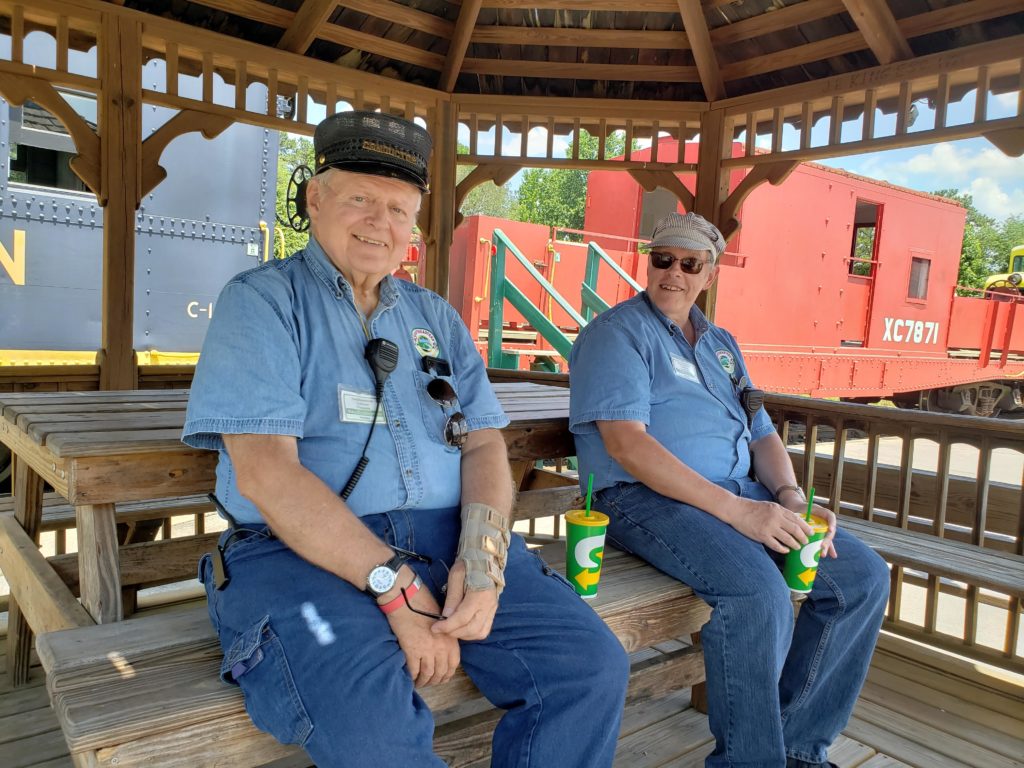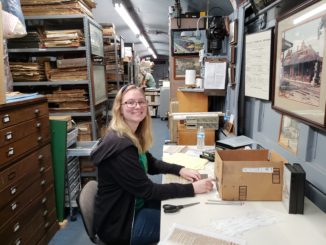
March’s Volunteer Spotlight focuses a beam on Ken Birmingham!
Ken was born on Long Island, New York and lived there for over 50 years until he moved to Norcross, GA in 1995. Ken’s educational background includes both an engineering degree and an MBA. He was a design review engineer on the moving parts of the wings on the Boeing 747, then an industrial/enterprise account manager and national channel manager for Hewlett-Packard. Ken retired in 2002.
Ken related how he became interested in becoming a volunteer when he visited the museum in December 2016 as a rail-fan.
“I rode on the rear platform of the N & W caboose and got talking to the young man who was the conductor. He encouraged me to apply. I have been a volunteer since January 2017, over two years.”
Ken greets passengers and collects tickets as the conductor on the standard gauge historic demonstration train. He has extensive duties as a conductor:
The Conductor’s Role and Responsibilities:
1. In the vicinity of, or while on board a train, be responsible for the safety of the crew and museum guests whether they are passengers on board or just in the area, and the operating equipment (engine, cars, switches, signals, etc.).
2. Participate in the daily equipment inspection, testing (e.g. a terminal A&R check and leak test), and preparation of the consist (engine and cars) before boarding the first passengers of the day. Verify coupler pins are down, all hoses are properly connected, and angle cocks are properly set. Verify all manual emergency braking valves are closed. Verify no under-car damage has occurred.
3. Review issues regarding the engine and the braking systems with the engineer. Assure the last car has flags or other rear-end markers, and that windows are open or closed depending on the weather. At end of day assure all windows and doors are closed and remove rear-end flags/markers are removed and stored.
4. Share current operating conditions and restrictions with the engineer and crew in crew safety meetings.
5. Oversee the boarding of passengers, including the crew’s collection of travel tickets. Assure passengers are guided or assisted in boarding and leaving the train.
6. During trips communicate with the engineer about train movement, its direction, switch indications and positions, and track conditions, including other equipment and personnel in the vicinity of the train. Communicate to the engineer. Example: a grade crossing is clear.
7. When otherwise not occupied be available to our guests to answer questions and offer information about the museum, its history, and the exhibits. This may happen before, after, or between train trips as well as when on board for a trip. Maximize the guest experience.
When asked what he liked most about being a conductor, Ken expressed that “besides getting to ride a train all the time, I get a chance to interact with museum patrons. I particularly enjoy meeting preschoolers. They are so enthusiastic.”
As far as funny or memorable moments, Ken shared, “It regularly amazes me when people, not just older people who have a hard time maneuvering about, put so much physical effort into getting on the train to ride it.”
Besides being a volunteer at the SRM, Ken also volunteers as an adult scouter in many different positions, currently as an instructor and consultant to the troops. Ken is very musically inclined. He notes that he has been into music since he was 10 years old and now plays about a dozen instruments in his church and praise band, and as a member of a gospel/60’s rock group playing at nursing homes. As far as hobbies are concerned, Ken ties up the interview by adding, “And, of course, I have a medium size DCC powered HO model railroad.”
Thank you again Ken for the de-light-ful Volunteer Spotlight. (Pun intended!)
By Ruth Hummel
Volunteer Spotlight Editor





Be the first to comment